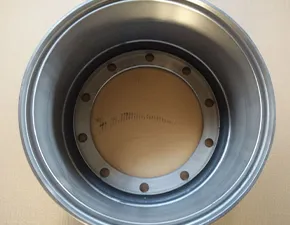
-
 Afrikaans
Afrikaans -
 Albanian
Albanian -
 Amharic
Amharic -
 Arabic
Arabic -
 Armenian
Armenian -
 Azerbaijani
Azerbaijani -
 Basque
Basque -
 Belarusian
Belarusian -
 Bengali
Bengali -
 Bosnian
Bosnian -
 Bulgarian
Bulgarian -
 Catalan
Catalan -
 Cebuano
Cebuano -
 Corsican
Corsican -
 Croatian
Croatian -
 Czech
Czech -
 Danish
Danish -
 Dutch
Dutch -
 English
English -
 Esperanto
Esperanto -
 Estonian
Estonian -
 Finnish
Finnish -
 French
French -
 Frisian
Frisian -
 Galician
Galician -
 Georgian
Georgian -
 German
German -
 Greek
Greek -
 Gujarati
Gujarati -
 Haitian Creole
Haitian Creole -
 hausa
hausa -
 hawaiian
hawaiian -
 Hebrew
Hebrew -
 Hindi
Hindi -
 Miao
Miao -
 Hungarian
Hungarian -
 Icelandic
Icelandic -
 igbo
igbo -
 Indonesian
Indonesian -
 irish
irish -
 Italian
Italian -
 Japanese
Japanese -
 Javanese
Javanese -
 Kannada
Kannada -
 kazakh
kazakh -
 Khmer
Khmer -
 Rwandese
Rwandese -
 Korean
Korean -
 Kurdish
Kurdish -
 Kyrgyz
Kyrgyz -
 Lao
Lao -
 Latin
Latin -
 Latvian
Latvian -
 Lithuanian
Lithuanian -
 Luxembourgish
Luxembourgish -
 Macedonian
Macedonian -
 Malgashi
Malgashi -
 Malay
Malay -
 Malayalam
Malayalam -
 Maltese
Maltese -
 Maori
Maori -
 Marathi
Marathi -
 Mongolian
Mongolian -
 Myanmar
Myanmar -
 Nepali
Nepali -
 Norwegian
Norwegian -
 Norwegian
Norwegian -
 Occitan
Occitan -
 Pashto
Pashto -
 Persian
Persian -
 Polish
Polish -
 Portuguese
Portuguese -
 Punjabi
Punjabi -
 Romanian
Romanian -
 Russian
Russian -
 Samoan
Samoan -
 Scottish Gaelic
Scottish Gaelic -
 Serbian
Serbian -
 Sesotho
Sesotho -
 Shona
Shona -
 Sindhi
Sindhi -
 Sinhala
Sinhala -
 Slovak
Slovak -
 Slovenian
Slovenian -
 Somali
Somali -
 Spanish
Spanish -
 Sundanese
Sundanese -
 Swahili
Swahili -
 Swedish
Swedish -
 Tagalog
Tagalog -
 Tajik
Tajik -
 Tamil
Tamil -
 Tatar
Tatar -
 Telugu
Telugu -
 Thai
Thai -
 Turkish
Turkish -
 Turkmen
Turkmen -
 Ukrainian
Ukrainian -
 Urdu
Urdu -
 Uighur
Uighur -
 Uzbek
Uzbek -
 Vietnamese
Vietnamese -
 Welsh
Welsh -
 Bantu
Bantu -
 Yiddish
Yiddish -
 Yoruba
Yoruba -
 Zulu
Zulu
drum to disk brake conversion cost
Drum to Disk Brake Conversion Cost An Overview
When it comes to enhancing a vehicle's braking system, one of the most popular upgrades is converting drum brakes to disk brakes. While drum brakes have traditionally been favored for their simplicity and cost-effectiveness, disk brakes offer several advantages that make them an appealing option for many vehicle owners. However, evaluating the cost of a drum to disk brake conversion involves various factors ranging from parts and labor to additional modifications.
Understanding the Basics
Drum brakes operate using friction generated by shoes pushing against a rotating drum, while disk brakes function by using calipers to squeeze pads against a rotating disk. The latter design provides better heat dissipation, improved stopping power, and a reduced risk of brake fade under heavy use. These benefits make disk brakes particularly ideal for high-performance vehicles, off-road applications, and those regularly subjected to heavy loads.
Cost Breakdown
The cost of converting from drum to disk brakes can vary significantly depending on several factors, including the type of vehicle, the quality of components chosen, and whether the work is performed by a professional or done as a DIY project. Typically, the parts alone can range from $300 to $1,500. This estimate includes the essential components such as brake rotors, calipers, brake pads, and hardware. In some cases, vehicles may also require an upgraded master cylinder and proportioning valve, which can add to the overall cost.
drum to disk brake conversion cost

Labor costs are another critical component of the total expenditure. Professional installation can range from $100 to $500, depending on the shop's hourly rate and the complexity of the installation. Factor in additional charges for any required modifications to the suspension or wheel assembly, which can further increase the total price.
Additional Considerations
When planning a drum to disk brake conversion, it’s essential to consider more than just the upfront costs. The long-term benefits of improved safety, better handling, and potentially lower maintenance costs due to the increased durability of disk brakes can often justify the investment. Furthermore, in performance applications, the enhanced braking response can substantially elevate the driving experience.
In some jurisdictions, changes to brake systems can affect vehicle insurance or compliance with local regulations. Owners should ensure that any modifications meet safety standards and consider consulting with a licensed mechanic or brake specialist.
Conclusion
Converting from drum to disk brakes is an investment that many vehicle enthusiasts and safety-conscious drivers find worthwhile. While the costs can vary, understanding the breakdown of parts, labor, and additional modifications will help in making an informed decision. In the long run, the advantages of improved performance, safety, and reliability make this upgrade a consideration for anyone looking to enhance their vehicle's braking capabilities. Whether for a classic car restoration or a modern vehicle needing better stopping power, the conversion offers significant benefits that extend beyond initial costs.
-
What Are Drum BrakesNewsJul.07,2025
-
Understanding Brake Drum MaterialNewsJul.07,2025
-
Semi-Trailer Brake Drum: A Key Component for Extreme Loads and Long-Distance TransportNewsJul.07,2025
-
Drum Brake Pads for SaleNewsJul.07,2025
-
Brake Drums for SaleNewsJul.07,2025
-
Brake Drum ManufacturerNewsJul.07,2025
-
Aluminum Brake Drums: The Future of High-Performance CarsNewsJul.07,2025
